
views
- Reality shifting is the practice of shifting your subconscious to an alternate reality and is largely based on the Multiverse Theory.
- The reality you decide to shift to (your “desired reality”) can be as realistic or fictitious as you want.
- Shifting requires some preparation, including things like writing a script, meditating, visualizing, or listening to subliminals.
What is reality shifting?

Reality shifting is when you move your subconscious to an alternate reality. Reality shifting is a concept that gained a lot of popularity on TikTok. The person doing the shifting moves their subconscious from their current reality (CR) to their desired reality (DR) through a mix of visualization, affirmation, and meditation. This desired reality can be anything a person wants, even fictional worlds like the Harry Potter universe. The concept of reality shifting is based on the Multiverse Theory, also called the Many Worlds Hypothesis. This hypothesis proposes that every possible alternate timeline is real and that these timelines exist in parallel universes. Therefore, there are also infinite versions of yourself existing in each of these parallel universes. Reality shifting is all about becoming aware of your consciousness in these other realities.
Shifting Process
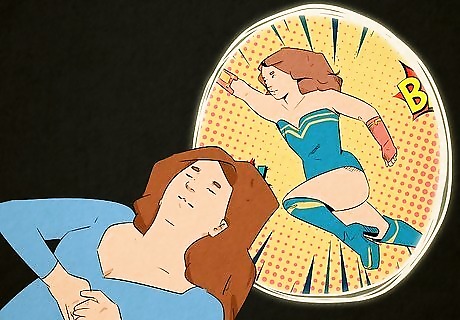
Choose your desired reality. There are no limits as to what your DR can be when you reality shift. Travel into the universe of your favorite book or movie, or go to a reality where you live in a different country. The sky’s the limit, and anything you can imagine is possible. Some more examples of DRs include: A past memory of yours that you want to revisit A combination of two fantasy worlds, such as the Lord of the Rings and Star Wars universes A place where everything is made out of cheese Your ideal future, including things like having your dream job and family
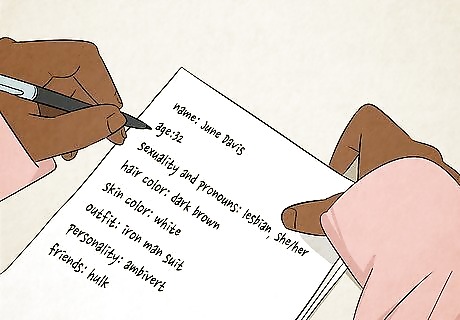
Write a script to help visualize the specific details of your DR. “Scripting” is a big part of reality shifting, and you write out your script before you begin shifting. Write down the specific details of your DR, such as location, time, people, and big events. Think of it as creating an outline to help you plan the most important parts of your shifting experience. Write your script as a first-person narrative and make it as detailed as possible. Some things you might write down include: Name Age Sexuality and pronouns Appearance (hair color, skin color, outfit, accessories, etc.) Personality Friends, family members, and other people present Your backstory Specific scenes from your DR Scents that stand out in the DR
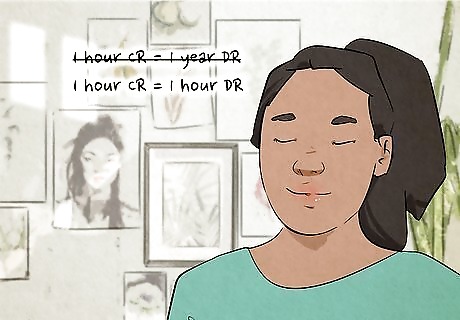
Decide how long you want to be in your DR. Use a time ratio to figure out how long you’ll be staying in this alternate reality. This ratio converts time in your CR to time in your DR. For example, 1 hour in your CR might be equivalent to 1 whole week in your DR. This ratio is completely up for you to decide. If you’re a beginner, keep the ratio between CR time and DR time the same (i.e., 1 hour CR = 1 hour DR). This will keep things nice and simple as you work on your shifting skills. Keep in mind that a drastic time ratio (such as 1 hour CR = 1 year DR) can potentially be tiring since you have a lot of ground to cover in a short amount of CR time There are also people who decide to “permashift,” or stay within their desired reality for an unspecified amount of time. This doesn’t mean you have to stay in your DR forever, but permashifters make this choice with the goal of leaving their CR behind and moving into their DR.
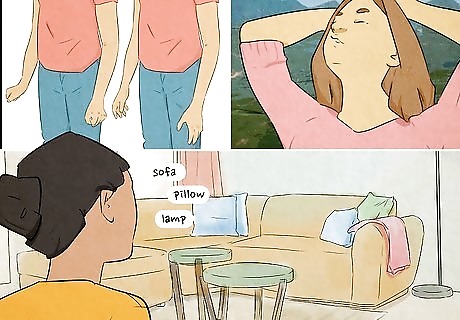
Relax your mind and body using grounding exercises. Grounding exercises are techniques that help you to be present within this very moment and stay anchored to reality. In order to shift to your DR, you must be aware of yourself in your CR and consciously make the shift. Some examples of grounding exercises include: Looking around the space you’re in and naming the objects around you Performing progressive muscle relaxation and focussing on your body Doing deep breathing exercises and getting rid of any distracting thoughts

Choose a shifting method that appeals to you. There are so many methods to choose from when it comes to shifting. Some incorporate meditation and breathing techniques while others have you say positive affirmations to yourself as you begin to shift. These positive affirmations are usually things like, “Nothing can keep me from my desired reality,” “I believe I can change my reality,” and “I am successful.” Some popular methods include: Raven Method: Lie down with your arms and legs spread out so that no part of your body is touching another. Count to 100 and repeat your positive affirmations between each number until you fall asleep. Alice in Wonderland Method: Lie down and imagine yourself sitting against a tree. Then, think about someone from your DR running by and get up to chase them. Follow them down a rabbit hole to get to your DR. The Alice in Wonderland Method is usually done when you’re awake. Pillow Method: Write your script along with affirmations on a piece of paper and place it under your pillow before going to sleep. You can shift when you’re asleep or awake. Beginners usually start with sleep methods and work their way up to shifting when they’re awake.

Use subliminals to aid your shifting experience. Subliminals are added sounds, music, or other noises that you put on in the background as you go through the process of shifting. These sounds help you immerse yourself in your DR. Many people use subliminals that match their shifting method. For example, if you’re using the Train Method and picturing yourself on a train going to your DR, you might throw on some ambient train sounds to help you. Other subliminals include: Soft, relaxing music Nature sounds White noise
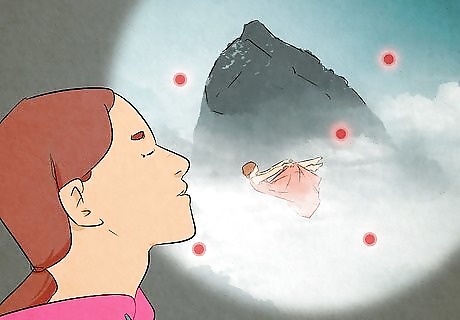
Note any shifting symptoms you feel but don’t let them distract you. If you feel any odd sensations as you’re shifting, it often means that it’s working. These sensations can vary depending on what you’re visualizing. For example, if you’re doing the Alice in Wonderland method and are picturing yourself falling down a rabbit hole, you might actually feel like you’re falling for a second. Take note of these sensations, but don’t let them distract you from completing your shift. Other symptoms include: Numbness Tingling Increased heart rate Flashes of bright lights Smelling a scent from your DR Hearing someone or something from your DR Feeling like you’re floating

Enjoy your DR until it’s time to come back. If you’ve succeeded in shifting, you’ll find yourself in your DR when you open your eyes or complete your visualization exercise. For example, after you fall asleep doing the Raven Method, you will wake up in your DR. Explore this reality to your heart’s content. Use your five senses to really take everything in before you have to come back to your CR. Many people use a safe word or gesture to signal to themselves that it’s time to leave and bring themselves back to their CR. Another way to come back to your CR is to simply set an intention to return. You might say to yourself something like, “It’s time to go back now.” Use your five senses to help you shift completely. Concentrate on certain images, smells, sounds, tastes, and feelings from your DR to make your experience more vivid.
Advice for Succesful Shifting

Drink lots of water and stay hydrated. Shifting can surprisingly take a lot out of your body. Even though you’re not doing any physical activity, concentrating for long periods of time can still dehydrate you. Be sure to hydrate well beforehand so you don’t break your concentration later on. Be sure to also take breaks between shifts to replenish your energy.

Practice meditating before you try shifting. Just like with any other skill, your first attempt at shifting might not go 100% perfectly. But that’s okay! The important thing is that you keep practicing until you successfully shift. Practice meditating when you have free time. Even if you’re not doing it with the goal of shifting, you’re still practicing clearing your mind and grounding yourself to the present reality.
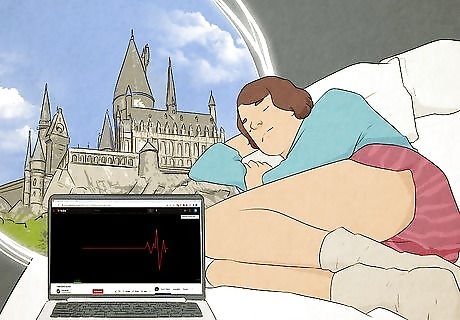
Adapt shifting methods in a way that works for you. It might be a bit overwhelming seeing all these different options for shifting methods. But just remember that these are meant to act as guides, not strict rules. If you find one that works for you, great! If not, that’s okay, too. Come up with your own visualization and meditation techniques that work for you. Play around with different exercises, subliminals, and scenarios until you find your perfect shifting method.
Does shifting work?

Reality shifting isn’t a science, and people can have different experiences. When it comes down to it, reality shifting is a way to use the power of your imagination in an immersive way. There is no scientific evidence that can back up the legitimacy of reality shifting, even though it might feel extremely real to some people. However, reality shifting has gained a lot of attention and popularity, and there have been many online communities that have formed around the reality shifting phenomenon. Reality shifting is not a healthy coping mechanism for dealing with past trauma or any mental health issues. If you’re using reality shifting as a means to avoid issues, you risk the possibility of those problems becoming even more harmful in the future. If you are struggling with mental health issues, talk to friends and family or seek professional help and counseling.
Similar Phenomena
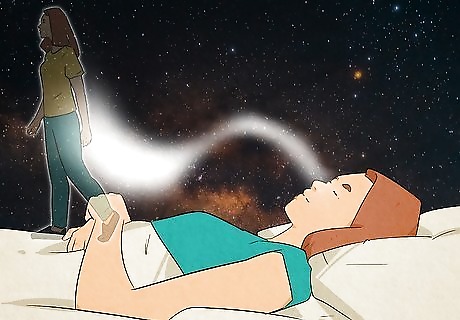
Lucid dreams: Lucid dreaming means that you become aware that you’re dreaming. Some people claim they can then interact with the things in their dream and control what happens. The biggest difference between shifting and lucid dreaming is that you have to be asleep to lucid dream. However, you can still reality shift even when fully awake. You also don’t usually prepare as extensively in order to have a lucid dream.

Maladaptive daydreaming: Daydreaming happens when your mind wanders off to random thoughts, usually without any prompting. Maladaptive daydreaming is when someone daydreams excessively, possibly for hours on end, and is often an unhealthy coping mechanism used to deal with one’s problems. Unlike reality shifting, people usually can’t control their maladaptive daydreaming. Also, there has been no evidence yet that suggests that reality shifting is harmful.

Self-hypnosis: People often use self-hypnosis to achieve a deep sense of relaxation. It’s a way to control your thoughts and emotions and remain focused on tasks. Self-hypnosis is similar to reality shifting because you may use similar techniques to perform both of them, such as saying positive affirmations or using subliminals. However, people usually use self-hypnosis in order to achieve a goal, such as reducing anxiety, quitting smoking, or sleeping. On the other hand, people reality shift in order to explore different realities.














Comments
0 comment